Japanese Art, Japanese Traditional Crafts
Kyoto Uchiwa Fans: Intricate Bamboo Frames with Traditional Japanese Decoration
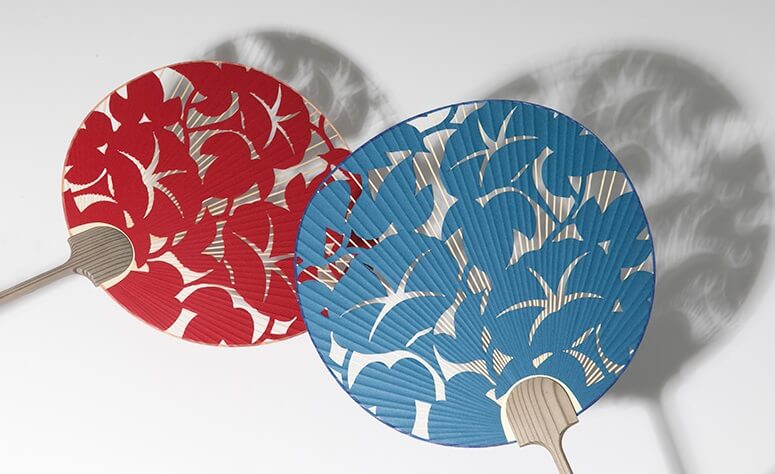
(Images: kyoto-fan.co.jp)
The most distinct characteristic of Kyou-uchiwa, or Kyoto uchiwa fans, are the strips of bamboo (take-higo) spread one by one in a radial pattern to form the backbone of each fan. The number of these strips determines the quality and inevitably the rank and value of each Kyoto fan. The greater the number of bamboo strips, the more expensive and luxurious the fan. With every ten strands marking a higher appreciated value, variations range from fifty up to one hundred bamboo strands. Fans constructed with eighty strands are considered extremely luxurious, while those with one hundred delicate strips are reserved for decorative purposes and not for daily use.

(Images: kyo-aiba.jp)
Kyoto Fans in the Ancient Imperial Court: Historic Roots as the Palace Uchiwa
With historic roots reaching back to their original use as in the Imperial Court as Palace uchiwas, Kyoto uchiwa fans continue to impress with the majestic beauty of their gold leaf, lacquered designs.

(Images: kyo-aiba.jp)
Kyoto uchiwa fans, also known by the name Miyako-uchiwa for their popularity and use amongst Imperial Court nobility, are known for the varnish and gold decorations which adorn their face to form the exquisite imagery for which Kyoto fans are known. During the Edo (or Tokugawa) Period of Japan’s history, Kyoto uchiwa fans experienced a boom in popularity among the popular classes as a way to escape the heat and humidity of East Asian summers.

(Images: kyoto-fan.co.jp)
Making the Historic and Regal Kyoto Uchiwa Fan
With the most elegant and intricate designs involving over 100 thin bamboo strips, just how are these artistic fans made? Let’s take a closer look.
1. Processing the Bamboo
Artisans measure and cut the bamboo trunks with hatchets, splitting the wood lengthwise from the top into strips according to the desired length of the Kyoto uchiwa fan,. Then, making the carefully measured bones or internal structure of the Kyoto fan, the artisan inserts notches to produce the desired width and thickness of the fan’s body. Throughout this process, bamboo taken only from Tanba in Kyoto Prefecture is used.
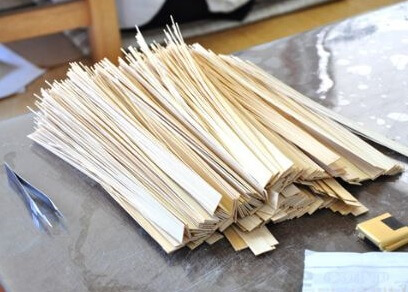
2. Applying the Paper Backing
Until the bamboo structure of the fan is set into the desired shape permanently, the strands are thinly shaved. Then, before the decorative papers which will adorn the final product are applied, a temporary and disposable layer is applied to each and every arm of the fan, one by one. This careful and painstaking process is necessary to ensure that the final product retains its straight and uniformly regal posture.
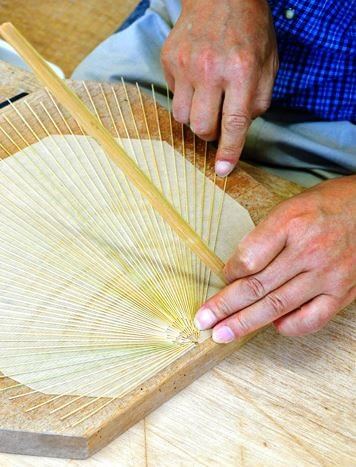
3. The Addition of Decorative Paper
This step is what gives the Kyoto uchiwa fan its beautiful, Japanese painting-like imagery. Using hand drawings, woodblock painting, and dyed Japanese paper designs, the uchiwa artisans apply a unique beauty.
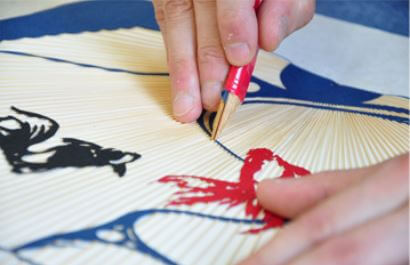
4. Application of the Underside and Decorated Face
After affixing the background paper, upon which the carefully designed decorations are appended, the Kyoto uchiwa fan is complete.
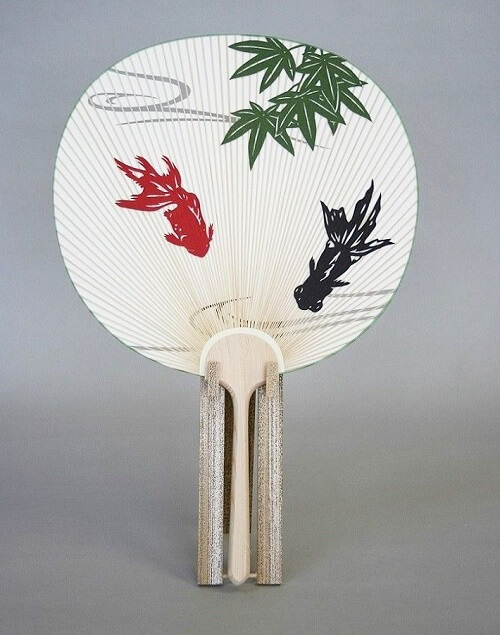
This is the unique and incredibly delicately crafted Kyoto fan.
With beautiful and unique personality, these Kyoto uchiwa fans are made possible only by the dexterous and patient craft of trained artisans who have devoted their lives to this art. Let’s take a final look at the fruits of this labourious process.
“Cooled with Only a Look”: Kyoto Uchiwa Fan and Display, 108,000 Japanese Yen (~$1K USD)
Priced at over 100,000 Japanese Yen, this fan byAiba Choube, tenth generation master of Aiba fans (established 1689, Kyoto), can be referred to as today’s Kyoto Uchiwa masterpiece.
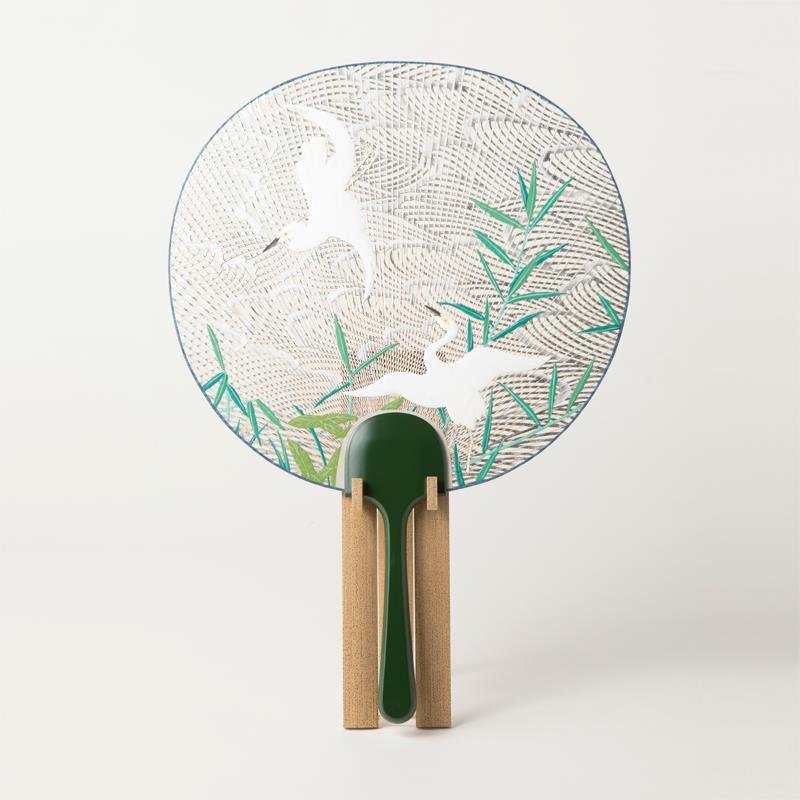
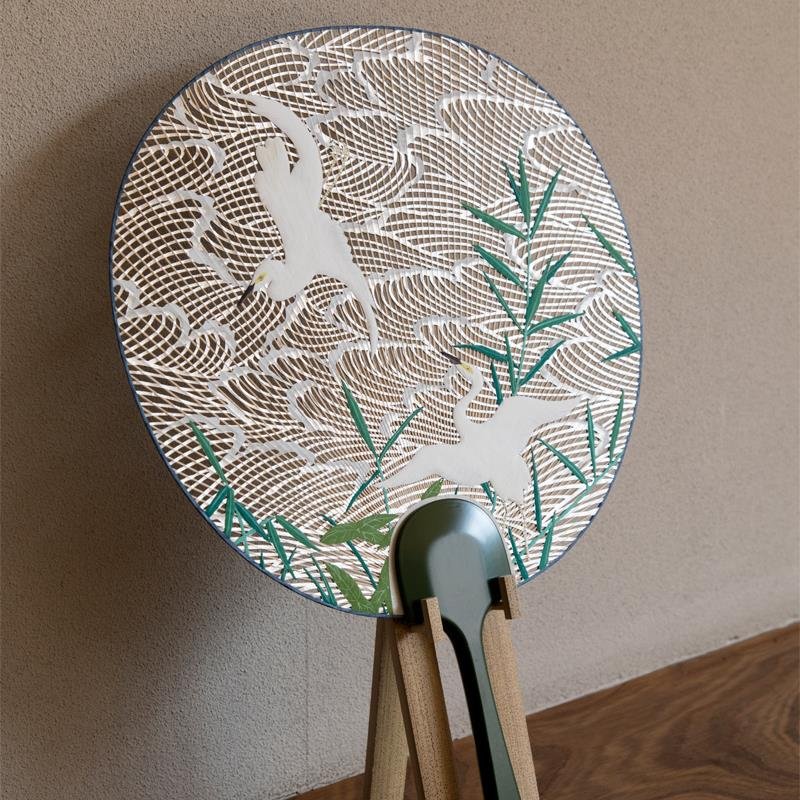
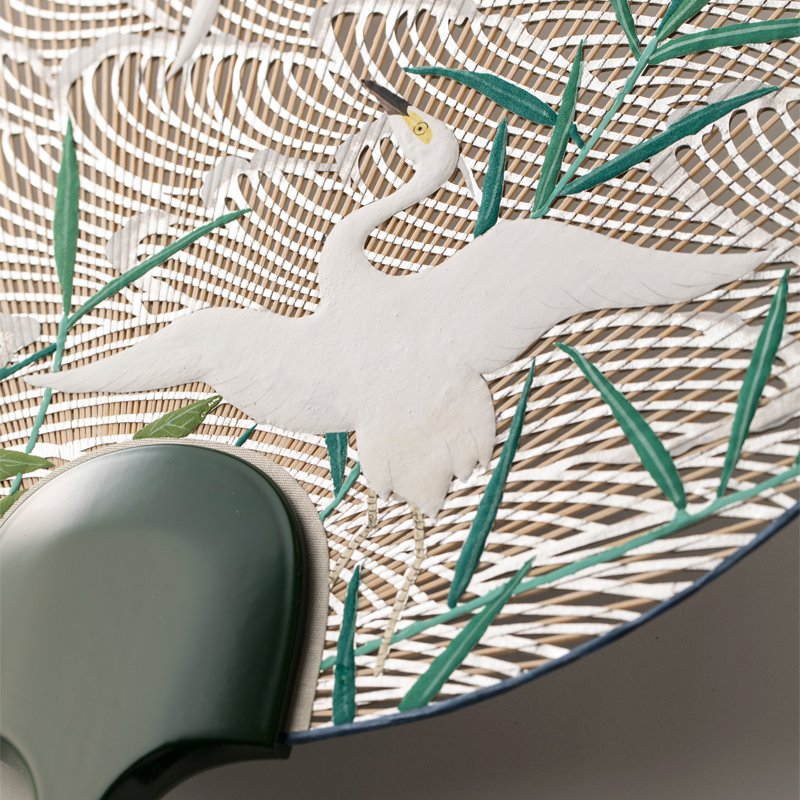
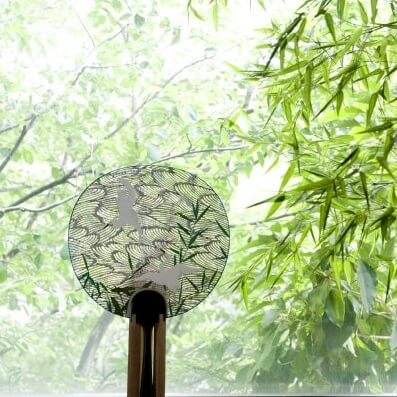
At the Aiba shop in Kyoto they have for over 300 years been making Kyoto fans with uncompromising perfection and beauty. “Rather than to produce wind, this fan was proposed by the ninth generation owner as a concept to ‘cool with the eyes.’” With a transparent frame and delicate paper cut-outs, this ‘openwork fan’ has been warmly received by foreign audiences as a displayed piece of art.
In fact, a Kyoto fan with semitransparent areas is nothing new. However, one which is entirely composed of such semitransparent design was a first. The Aiba fan is thus one of uniform and dual-sided transparency. Paper is only used where a design is applied, meaning no background appears anywhere else on the fan. This makes the steps involved in production much more demanding on the artisan. At present, Aiba artisans spend several weeks on each piece.
The high quality of these fans begins with the careful selection of only domestically sourced and prepared materials. Completed with carefully selected four to five year old bamboo from nearby Tanba, handmade Japanese paper, and domestic hemlock and cedar for decoration, only the best materials are used in the making of these fans. With designs that reflect the beauty of the four seasons, the Aiba fan is enjoyed in many ways like Japanese flower arranging (ikebana) and the hanging scrolls of tradition Japanese interior decorating.

Author - Jay
In my spare time I enjoy watching baseball, tasting local cuisine, and exploring by road and rail. Having lived in several cities around the world, I have an appreciation for local as well as international histories and cultures. Excited by cultural and social exchange, it is my hope that this blog will help promote an interest in Japanese traditional wares and practises by introducing you to their history and meanings.

About Orientalsouls.com
Learn and Buy Japanese Craftsmanship, Tradition & Culture
OrientalSoul.com is the online shop where you can buy traditional crafts of Japan.
We only sell selected authentic products in which true spirits of Japanese craftsmanship exist.
You may be able to find similar products in other shops for lower prices. However, we sell products based on fair prices that worth labor and value of experienced craftsmen.
In addition, we introduce stories about product history, how a product is made, what makes it different from others, and how the product enriches your life!